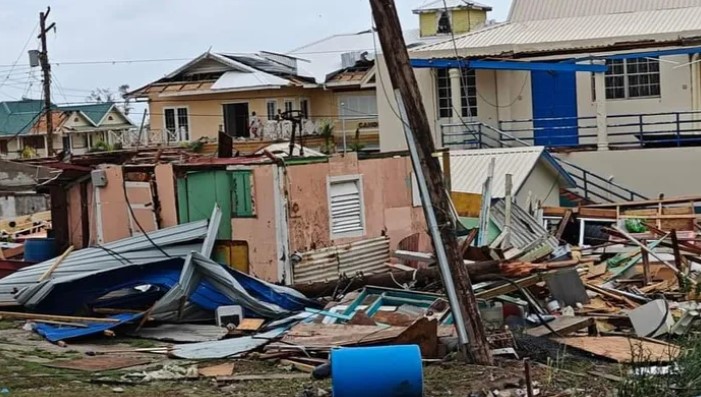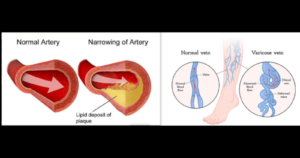Emergency preparedness is the process of ensuring that individuals, families, communities, and organizations are ready to respond effectively to various emergencies. Being prepared can significantly reduce the negative impacts of emergencies, such as loss of life, injuries, property damage, and disruption of daily life. Here are some key reasons why being prepared is crucial:
- Safety and Survival: Having a plan and the necessary supplies can mean the difference between life and death during an emergency.
- Reduced Stress and Anxiety: Knowing that you have a plan can reduce the stress and anxiety that often accompany emergencies.
- Faster Recovery: Preparedness can lead to quicker and more efficient recovery, minimizing the long-term impacts on individuals and communities.
- Resource Management: Being prepared allows for better management of resources, ensuring that essentials such as food, water, and medical supplies are available when needed.
- Community Resilience: Prepared communities can support each other better and recover faster, promoting overall resilience.
4 Common Emergencies
Emergencies can be broadly categorized into natural disasters, man-made disasters, and medical emergencies. Each type has its unique characteristics and requires specific preparedness measures.
1. Natural Disasters
Natural disasters are events caused by natural processes of the Earth. They can be sudden or slow-onset and can affect large areas and populations. Common natural disasters include:
- Earthquakes: Sudden shaking of the ground caused by the movement of the Earth’s tectonic plates.

- Hurricanes and Typhoons: Severe tropical storms with high winds and heavy rain.

- Floods: Overflow of water onto normally dry land, often due to heavy rain, storms, or dam failure.

- Tornadoes: Rapidly rotating columns of air extending from a thunderstorm to the ground.

- Wildfires: Uncontrolled fires in forests or grasslands, often started by lightning or human activity.

- Volcanic Eruptions: Explosive events where magma, ash, and gases are expelled from a volcano.

2. Man-Made Disasters
Man-made disasters result from human actions, either accidental or intentional. These can have devastating impacts and often require coordinated responses. Common man-made disasters include:
- Industrial Accidents: Incidents such as chemical spills, explosions, or fires in industrial facilities.
- Transportation Accidents: Crashes involving vehicles, trains, ships, or airplanes.
- Terrorism: Deliberate acts of violence intended to create fear and harm.
- Civil Unrest: Large-scale public disturbances, including riots and protests.
- Cyber Attacks: Unauthorized access or damage to computer systems and networks.
3. Medical Emergencies
Medical emergencies involve situations that require immediate medical attention to prevent serious health consequences or death. Common medical emergencies include:
- Heart Attacks: Blockage of blood flow to the heart muscle, requiring prompt medical intervention.

- Strokes: Disruption of blood flow to the brain, leading to brain damage.
- Severe Bleeding: Uncontrolled bleeding that needs immediate action to prevent blood loss.
- Choking: Obstruction of the airway, requiring quick response to restore breathing.
- Severe Allergic Reactions (Anaphylaxis): Life-threatening allergic reactions that require immediate treatment with epinephrine.
- Poisoning: Ingestion, inhalation, or exposure to toxic substances.
Being prepared for emergencies is essential for ensuring safety, reducing the impact of disasters, and promoting faster recovery. By understanding the types of emergencies that can occur and taking proactive measures, individuals and communities can enhance their resilience and ability to respond effectively when disaster strikes.
4. Cyber attack and system failure of vital computer systems
A cyber attack and system failure of vital computer systems refer to events where malicious actions or technical issues disrupt essential services and infrastructure. Here’s a brief explanation:
Cyber Attack
A cyber attack involves malicious activities aimed at compromising the security of computer systems or networks. These attacks can lead to unauthorized access, data breaches, or operational disruptions. Types of cyber attacks include ransomware (which locks files until a ransom is paid), phishing (which tricks users into revealing sensitive information), and denial-of-service (which overwhelms a system with traffic).
System Failure
System failure occurs when critical computer systems or infrastructure fail to operate correctly, potentially due to hardware malfunctions, software bugs, or other technical issues. Such failures can impact essential services like banking, healthcare, and education, leading to significant operational disruptions and potential data loss.
July 11th 2024 Microsoft System Failure
In July 2024, Microsoft experienced a significant system failure that affected many of its cloud services and enterprise products.
The outage, caused by a combination of technical issues and a cyber attack, disrupted services such as Azure (Microsoft’s cloud computing platform), Office 365, and other critical applications used by businesses and governments worldwide.
This incident highlighted vulnerabilities in cloud infrastructure and the potential impact of system failures on global operations.

The failure led to widespread disruptions, affecting productivity and access to essential services for organizations and individuals relying on Microsoft’s platforms. Microsoft responded by addressing the technical issues, enhancing security measures, and providing support to affected customers.
The event underscores the importance of robust cybersecurity practices, disaster recovery plans, and the need for contingency measures to manage the impact of both cyber attacks and system failures on vital systems.
Why is emergency preparedness important?
Emergency preparedness is crucial for several reasons:
1. Minimizes Impact: Effective preparedness can significantly reduce the impact of disasters, both in terms of human lives and property damage. It allows for timely and coordinated responses that mitigate the severity of the event.
2. Ensures Safety: Being prepared ensures that individuals and communities know what to do before, during, and after an emergency. This knowledge increases personal safety and can save lives by avoiding panic and ensuring clear, practiced responses.
3. Enables Faster Recovery: Preparedness plans include strategies for recovery, which help communities bounce back more quickly after a disaster. This can reduce the long-term economic, social, and psychological impacts of the event.
4. Resource Allocation: Preparedness ensures that resources such as food, water, medical supplies, and shelter are readily available and can be distributed efficiently during an emergency.
5. Community Resilience: Prepared communities are more resilient and can handle emergencies with less external assistance. This resilience strengthens the community and fosters a sense of solidarity and support.
6. Reduces Financial Costs: Investing in preparedness measures can reduce the financial burden of disasters by preventing or minimizing damage. This includes reducing insurance claims, infrastructure repairs, and healthcare costs.
7. Compliance and Legal Obligations: Many regions have laws and regulations that require emergency preparedness for businesses, schools, and other organizations. Compliance with these regulations is essential to avoid legal repercussions.
8. Peace of Mind: Knowing that there are plans in place to handle emergencies can provide peace of mind to individuals and communities, reducing anxiety and stress associated with potential disasters.
In essence, emergency preparedness is a proactive approach that not only protects lives and property but also fosters a culture of readiness and resilience.

Emergency Kits:What should be in an emergency preparedness kit?
Basic Supplies
1. Water: At least one gallon of water per person per day for at least three days, for drinking and sanitation.
2. Food: Non-perishable food items, such as canned goods, protein bars, dried fruits, and nuts, for at least three days.
3. Manual can opener: For canned food.
4. Infant formula, bottles, diapers, if you have an infant.
5. Pet food and extra water for your pet.
6. Medications always keep an extra month supply of important medications example blood pressure medications, heart meds,diabetis meds.
First Aid Supplies
1. First aid kit: Including adhesive bandages, antiseptic wipes, antibiotic ointment, gauze pads, adhesive tape, scissors, tweezers, hydrocortisone ointment, thermometer, and pain relievers.
2. Medications and medical supplies: Prescription medications, eyeglasses, contact lens solution, and medical equipment like blood pressure monitors or insulin supplies.
Tools and Emergency Supplies
- Flashlight and extra batteries.
- Battery-powered or hand-crank radio: NOAA Weather Radio if possible.
- Multi-tool: Like a Swiss Army knife.
- Duct tape: For various uses.
- Whistle: To signal for help.
- Dust masks: To help filter contaminated air.
- Plastic sheeting and duct tape: To shelter in place.
- Wrench or pliers: To turn off utilities.
- Local maps. you can find at travel centers.
- Cell phone with chargers and a backup battery.
- Battery operated Walkie talkie
- Extra batteries
Personal Hygiene and Sanitation Items
- Moist towelettes, garbage bags, and plastic ties: For personal sanitation.
- Soap, hand sanitizer, and disinfecting wipes.
- Feminine hygiene products.
- Toothbrushes, toothpaste, and other personal hygiene items.
Important Documents
- Copies of personal documents: Birth certificates, passports, insurance policies, bank account records, and other critical documents.
- Emergency contact information.
- Cash or traveler’s checks.

Keep in a waterproof, fireproof container. for Example you can find an easy to grab waterproof fireproof safe to buy online or in some stores.
Clothing and Bedding
- Complete change of clothing: Including a long-sleeved shirt, long pants, and underwear sturdy shoes.
- Blankets or sleeping bags.
- Warm clothing: In case of cold weather.
Miscellaneous
- Books, games, puzzles, or other activities for children.
- Paper and pencil.
- Matches in a waterproof container.
- Personal identification.
- Extra set of car keys and house
Special Considerations
- For elderly or disabled individuals: Necessary medical devices, supplies, and items to support their mobility and health.
- For infants or children: Extra formula, bottles, diapers, and baby wipes.
Step by step guide to Maintane and keep emergency supplies up to date
Maintaining and keeping emergency supplies up to date is crucial for ensuring readiness in case of an emergency. Here are some detailed steps to help you manage your emergency kit effectively:
- Create an Inventory List:
- Make a detailed list of all the items in your emergency kit, including expiration dates.
- Categorize items (e.g., food, water, medical supplies, tools, clothing).
- Regularly Check and Replace Expired Items:
- Set reminders to check your kit at least twice a year, ideally in spring and fall.
- Replace expired food, water, medications, and any other perishable items.
- Check batteries and replace them if they are near expiration.
- Store in a Cool, Dry Place:
- Keep your kit in an easily accessible location that is cool and dry to prevent spoilage and damage.
- Avoid areas with high humidity, extreme temperatures, or direct sunlight.
- Rotate Supplies:
- Use a first-in, first-out (FIFO) system for items with expiration dates.
- Consume items close to expiration and replace them with new supplies.
- Update Your Kit for Seasonal Changes:
- Adjust your kit to reflect seasonal needs (e.g., adding warm clothing in winter, sunscreen, and bug repellent in summer).
- Include items specific to seasonal threats like hurricanes, blizzards, or wildfires.
- Include Personal Needs:
- Tailor your kit to meet the specific needs of your family members, including infants, elderly, and pets.
- Ensure you have an adequate supply of prescription medications, personal hygiene items, and any other necessary personal items.
- Check Tools and Equipment:
- Inspect tools and equipment like flashlights, radios, and multi-tools to ensure they are in working order.
- Test and replace batteries as needed.
- Document and Review:
- Keep a record of the last check date and the next scheduled review.
- Use a checklist to ensure nothing is overlooked during inspections.
- Emergency Plan Review:
- Review and update your emergency plan regularly, ensuring that all family members are familiar with it.
- Practice emergency drills to ensure everyone knows what to do in case of an emergency.
- Stay Informed:
- Stay updated on potential risks and emergencies specific to your area.
- Subscribe to local alerts and warnings to stay informed about any impending threats.
By following these steps, you can ensure that your emergency supplies are always up to date and ready to use when needed.
How often should you update my emergency kit?
- Regular Check:
- At a minimum, update your emergency kit at least once a year.
- Biannual Checks:
- Ideally, conduct a more thorough check twice a year, in spring and fall.
- Before and After Seasonal Changes:
- Review your kit before and after seasonal changes to ensure it meets current weather-related needs (e.g., adding warm clothing for winter, adjusting supplies for hurricane season).
- After Use:
- Update your kit immediately after any use to replace used items.
What to Check During an emergency kit Updates:
- Expired Items:
- Check all food, water, and medications for expiration dates and replace any that are outdated.
- Battery-Powered Devices:
- Test all battery-powered devices like flashlights and radios, and replace batteries as needed.

3. Tools and Equipment:
- Inspect tools and equipment to ensure they are in working order.
4. Personal Needs:
- Ensure the kit meets the current needs of all family members, including any new medical conditions, dietary requirements, or changes in family size (e.g., new baby or pet).
5. Seasonal Adjustments:
- Adjust the contents for seasonal needs, such as adding sunscreen and insect repellent in summer or extra blankets and warm clothing in winter.
6. Emergency Plan:
- Review and update your emergency plan, making sure all contact information is current and that everyone in the household is familiar with the plan.
7. Documentation:
- Keep a record of when the kit was last checked and updated, and schedule the next check.
Additional Tips:
- Stay Informed:
- Keep up to date with local emergency alerts and adjust your kit accordingly based on any new potential threats or risks.
- Community Resources:
- Stay connected with local community resources and support networks for additional guidance and assistance in emergency preparedness.
By following these guidelines, you can ensure your emergency kit is always ready and equipped to handle any situation.
How to create a family emergency plan?
1. Identify Potential Emergencies
- List Possible Scenarios: Identify emergencies that are most likely to occur in your area (e.g., natural disasters like earthquakes, floods, tornadoes, or man-made events like fires or chemical spills).
- Assess Vulnerabilities: Consider the specific vulnerabilities of your household members, including age, mobility, health conditions, and special needs.
2. Establish a Communication Plan
- Emergency Contacts: Compile a list of important contacts, including family members, neighbors, local emergency services, schools, and workplaces.
- Communication Methods: Decide how family members will communicate during an emergency. Ensure everyone knows how to use different methods (phone, text, email, social media).
- Out-of-Town Contact: Choose an out-of-town contact person who can relay information if local communication is disrupted.
- Emergency Information Cards: Provide each family member with an emergency information card containing essential contact details.
3. Designate Meeting Places

- Indoor Meeting Place: Select a safe spot inside your home where everyone can gather during a sudden emergency.
- Neighborhood Meeting Place: Choose a location outside your home but within your neighborhood (e.g., a neighbor’s house or a nearby park).
- Out-of-Neighborhood Meeting Place: Identify a place outside your neighborhood in case you need to evacuate the area (e.g., a friend’s house, a local shelter).
4. Plan for Special Needs and Pets
- Special Needs: Account for any special requirements of family members, such as medical equipment, medications, mobility aids, or dietary restrictions.
- Pets: Include plans for pets, ensuring they have identification, carriers, leashes, food, and water. Know the locations of pet-friendly shelters.
- Emergency Supplies: Prepare emergency kits with essential items for each family member, including special needs supplies and pet supplies.
5. Practice and Review the Plan Regularly
- Drills: Conduct regular family drills to practice the emergency plan. Make sure everyone knows what to do and where to go.
- Update the Plan: Review and update the plan periodically, especially when there are changes in family circumstances or contact information.
- Feedback: After each drill, discuss what worked well and what needs improvement. Make necessary adjustments to the plan.
- Stay Informed: Keep informed about the types of emergencies that could affect your area and update your plan accordingly.
6. Additional Tips
- Emergency Kit: Ensure each family member has a personalized emergency kit, and store it in an easily accessible location.
- Learn Skills: Encourage family members to learn basic emergency skills such as first aid, CPR, and how to use a fire extinguisher.
- Community Resources: Familiarize yourself with community resources and services that can provide assistance during an emergency.
Creating and maintaining a family emergency plan helps ensure that everyone in your household is prepared, informed, and ready to act in case of an emergency.
Here is a simple emergency plan for a family presented in table form:
| Section | Details |
|---|---|
| Potential Emergencies | Earthquakes, Floods, Fires, Tornadoes, Hurricane, Chemical Spills |
| Emergency Contacts | |
| – Family Members | John: 555-1234, Jane: 555-5678, Sam: 555-8765 |
| – Neighbors | Smiths: 555-2345, Johnsons: 555-3456 |
| – Local Emergency Services | Fire Department: 911, Police Department: 911, Hospital: 555-7890 |
| – Schools/Workplaces | Sam’s School: 555-2468, John’s Work: 555-1357, Jane’s Work: 555-9753 |
| – Out-of-Town Contact | Aunt Mary: 555-6543 |
| Communication Plan | |
| – Primary Method | Phone Calls |
| – Backup Methods | Text Messages, Email, Social Media |
| – Emergency Information Cards | Distributed to all family members, containing contact details and meeting places |
| Meeting Places | |
| – Indoor | Living Room |
| – Neighborhood | Johnson’s House (555 Main St.) |
| – Out-of-Neighborhood | Community Center (123 Elm St.) |
| Special Needs & Pets | |
| – Special Needs | John’s Medication (Heart Condition), Jane’s Mobility Aid (Walker), Sam’s Dietary Restrictions (Peanut Allergy) |
| – Pet Plan | Dog (Rex) – Carrier, Leash, Food, Water; Pet-Friendly Shelters: City Shelter (555-6789) |
| Emergency Supplies | |
| – Family Emergency Kit | Water, Food, First Aid Kit, Flashlights, Batteries, Important Documents, Medications |
| – Special Needs Supplies | John’s Heart Medication, Jane’s Walker, Sam’s EpiPen |
| – Pet Supplies | Rex’s Food, Water, Carrier, Leash |
| Practice & Review | |
| – Drills | Quarterly Family Drills |
| – Plan Updates | Annually or when family circumstances change |
| – Feedback & Improvement | Post-drill discussion and plan adjustments |
| – Community Resources | Local Shelter (555-7890), Community Center (555-6789), Red Cross (555-5678) |
Emergency plan for a cyber attack
Cyber Attack Emergency Kit
| Item | Description |
|---|---|
| 1. Incident Response Plan | A detailed, documented plan outlining procedures for detecting, responding to, and recovering from cyber attacks. |
| 2. Contact List | A list of key personnel, including IT staff, incident response team members, legal advisors, and external partners. |
| 3. Communication Tools | Secure communication tools (e.g., encrypted messaging apps) for internal and external communication during an incident. |
| 4. Backup Systems | Up-to-date backups of critical data and systems, stored securely (both on-site and off-site). |
| 5. Security Software | Access to security tools (e.g., antivirus, anti-malware) and their latest updates for scanning and removing threats. |
| 6. Forensic Tools | Tools for digital forensics to analyze and investigate the attack (e.g., data recovery, log analysis tools). |
| 7. Incident Logging Tools | Tools for documenting and tracking the incident, including details of actions taken and communications made. |
| 8. Legal Documentation | Copies of relevant legal documents and guidelines on data breach reporting and compliance (e.g., GDPR, CCPA). |
| 9. Contact Information for External Resources | Contact details for cybersecurity experts, consultants, or service providers for additional support. |
| 10. Emergency Contact List | A list of emergency contacts for law enforcement or regulatory bodies if the breach requires reporting. |
| 11. Recovery Resources | Information on recovery procedures, including how to restore data and systems from backups. |
| 12. Training Materials | Resources for ongoing employee training and awareness on cybersecurity practices and incident response. |
| 13. Password Management Tools | Tools for securely managing and updating passwords (e.g., password managers). |
| 14. Incident Reporting Templates | Pre-prepared templates for documenting and reporting incidents to stakeholders and regulatory bodies. |
| 15. Hardware Access | Secure access to necessary hardware (e.g., spare devices, hardware tokens) required for incident response and recovery. |
| 16. Cash | Always keep some cash put aside ,during cyber attacks the banking systems, grocery stores systembe affected. |
An effective emergency plan for a cyber attack involves several key steps to ensure that your data, systems, and operations are protected and can recover swiftly. Here’s a general outline you can follow:

1. Preparation
A. Risk Assessment
- Identify critical assets and data.
- Assess potential vulnerabilities and threats.
- Determine the impact of a cyber attack on your operations.
B. Develop Policies and Procedures
- Create and document a comprehensive cybersecurity policy.
- Establish procedures for incident detection, response, and recovery.
C. Training
- Conduct regular training for employees on cybersecurity best practices and recognizing phishing attempts.
- Run simulated attacks to test response readiness.
2. Detection
A. Monitoring
- Implement security monitoring tools (e.g., intrusion detection systems, firewalls).
- Regularly review logs for unusual activity.
B. Alert Systems
- Set up automated alerts for suspicious activity.
- Establish a protocol for reporting incidents.
3. Response
A. Incident Response Team
- Assemble a team with defined roles, including IT professionals, legal advisors, and communication experts.
B. Containment
- Isolate affected systems to prevent the spread of the attack.
- Disable compromised accounts and change passwords.
C. Eradication
- Identify and remove the root cause of the attack (e.g., malware, unauthorized access).
D. Communication
- Notify stakeholders, including employees, clients, and possibly regulators, depending on the breach’s severity.
- Develop a communication plan to manage public relations and mitigate damage to your reputation.
4. Recovery
A. Restoration
- Restore affected systems and data from backups.
- Verify that systems are free of threats before bringing them back online.
B. Post-Incident Analysis
- Conduct a thorough review of the incident.
- Analyze what went wrong, what was done well, and how to improve response efforts.
C. Update Policies
- Revise cybersecurity policies and procedures based on lessons learned.
- Enhance training and prevention measures.
5. Legal and Compliance
A. Legal Obligations
- Understand and comply with legal requirements related to data breaches (e.g., GDPR, CCPA).
- Consult legal experts for advice on reporting and managing legal risks.
B. Documentation
- Keep detailed records of the incident, including the response and recovery actions taken.
- Document any communication with external parties.
6. Prevention
A. Regular Updates
- Keep all software, including security tools, up to date with the latest patches and updates.
B. Backups
- Maintain regular backups of critical data and test restore procedures.
C. Security Practices
- Implement multi-factor authentication (MFA) and strong password policies.
- Conduct regular security audits and vulnerability assessments.
Having a well-defined plan and regularly updating it will help you manage and mitigate the impact of a cyber attack effectively.
Here’s a table outlining an emergency plan for a cyber attack:
| Action | Details |
|---|---|
| 1. Preparation: A. Risk Assessment | Identify critical assets, assess vulnerabilities and threats, determine impact. |
| B. Develop Policies and Procedures | Document cybersecurity policies, establish incident response and recovery procedures. |
| C. Training | Train employees on best practices and simulated attacks. |
| 2. Detection | |
| A. Monitoring | Implement security monitoring tools, review logs for unusual activity. |
| B. Alert Systems | Set up automated alerts, establish reporting protocol for incidents. |
| 3. Response | |
| A. Incident Response Team | Assemble a team with defined roles (IT, legal, communication). |
| B. Containment | Isolate affected systems, disable compromised accounts. |
| C. Eradication | Identify and remove the root cause of the attack. |
| D. Communication | Notify stakeholders, manage public relations, follow communication plan. |
| 4. Recovery | |
| A. Restoration | Restore systems and data from backups, ensure systems are threat-free. |
| B. Post-Incident Analysis | Review the incident, analyze responses, and identify improvements. |
| C. Update Policies | Revise policies and procedures, enhance training and prevention measures. |
| 5. Legal and Compliance | |
| A. Legal Obligations | Comply with data breach laws (e.g., GDPR, CCPA), consult legal experts. |
| B. Documentation | Document incident details, response actions, and communication with external parties. |
| 6. Prevention | |
| A. Regular Updates | Keep software and security tools updated with the latest patches. |
| B. Backups | Maintain and test regular backups of critical data. |
| C. Security Practices | Implement MFA, strong password policies, and conduct regular security audits. |
How to prepare for a natural disaster like a hurricane or earthquake?
| Action | Details |
|---|---|
| Research | Identify the specific natural disaster risks in your area (e.g., hurricanes, earthquakes, floods). |
| Local Resources | Consult local government websites, emergency management agencies, and community organizations. |
| Emergency Kit | Assemble a kit with essentials: water, food, medications, flashlight, batteries, first aid supplies, and important documents. |
| Family Plan | Develop a family emergency plan, including evacuation routes, meeting points, and contact information. |
| Communication | Ensure all family members know how to communicate during an emergency (e.g., phone, social media, local meeting spots). |
| Structural Safety | Reinforce your home against natural disasters (e.g., securing heavy furniture, installing storm shutters, retrofitting for earthquakes). |
| Utilities | Know how to shut off utilities (gas, water, electricity) in case of emergency. |
| Insurance | Review and update your home insurance policy to cover natural disasters. |
| Weather Updates | Monitor weather reports and warnings from reliable sources (e.g., NOAA, local news). |
| Emergency Alerts | Sign up for local emergency alert systems to receive timely updates. |
| Social Media and Apps | Follow local emergency management agencies and use apps for real-time updates and information. |

Preparing for natural disasters like hurricanes or earthquakes involves several important steps. Here’s a comprehensive guide:
- Know Your Area’s Risks:
- Research the specific natural disasters that are most likely to affect your area.
- Understand local emergency plans and evacuation routes.
- Create an Emergency Kit:
- Include essentials like non-perishable food, water (one gallon per person per day for at least three days), a flashlight, batteries, a first aid kit, medications, a manual can opener, and important documents.
- Don’t forget items for children, pets, and any special needs.
- Develop an Emergency Plan:
- Establish a communication plan with family members and ensure everyone knows how to reach each other.
- Identify safe locations in your home for different types of disasters (e.g., a safe room for hurricanes, drop-and-cover spots for earthquakes).
- Plan for how to evacuate your home if necessary, including transportation and meeting points.
- Secure Your Home:
- For hurricanes, ensure windows and doors are properly secured, and consider installing storm shutters.
- For earthquakes, secure heavy furniture, appliances, and other items that could cause injury if they fall.
- Check that your home meets local building codes designed to withstand natural disasters.
- Stay Informed:
- Monitor weather updates and emergency alerts through local news, weather apps, and NOAA Weather Radio.
- Understand the warning signs and alerts specific to hurricanes and earthquakes.
- Review and Practice Your Plan:
- Regularly review and update your emergency plan and kit to make sure everything is current and in working order.
- Practice drills with your family to ensure everyone knows what to do in an emergency.
How can people with disabilities prepare for emergencies?
Preparing for emergencies is crucial for everyone, but especially for individuals with disabilities. Here are some detailed steps to help create a robust plan:
- Create a Personal Support Network:
- Identify Key Contacts: Establish a list of people who can help in an emergency, such as family, friends, neighbors, and caregivers. Ensure they are aware of your needs and how they can assist.
- Emergency Contacts: Keep a list of important contacts, including healthcare providers, accessible in multiple locations (phone, email, physical copy).
- Communication Plan: Set up a communication strategy with your support network. This could include regular check-ins or updates.
- Have a Supply of Necessary Medications and Equipment:
- Medication Supply: Maintain an adequate supply of medications, including any prescriptions, over-the-counter drugs, and special equipment. Keep them in an accessible location.
- Medical Equipment: Ensure you have backup power sources for essential medical equipment (e.g., battery packs, generators). Regularly check and maintain your equipment.
- Documentation: Keep copies of your medical records, including any important instructions for the use of medical equipment.
- Make an Emergency Plan:
- Mobility Considerations: Plan how you will evacuate if you have mobility issues. Identify accessible routes and transportation options. Practice evacuation drills.
- Communication Needs: Ensure you have a method of communication that suits your needs (e.g., hearing aids, communication devices). Plan how you will alert others if you need assistance.
- Medical Needs: Outline any specific medical needs or procedures and ensure your support network is informed. Include a list of emergency contacts who can provide medical information if necessary.
- Prepare Emergency Kits:
- Personal Kit: Pack a kit with essentials, such as medications, a first-aid kit, a flashlight, batteries, water, and non-perishable food.
- Special Needs Kit: Include items specific to your needs, such as adaptive devices, medical supplies, and any comfort items.
- Practice Your Plan:
- Drills: Regularly practice your emergency plan with your support network to ensure everyone knows their role and how to assist effectively.
- Review and Update: Periodically review and update your plan and emergency kits to reflect any changes in your needs or circumstances.
What should I include in a pet emergency kit?
- Food and water for several days
- Medications and medical records
- Leashes, harnesses, and carriers
- Identification and photos of your pet
- Comfort items and toys
How can I maintain my mental health during a disaster?
- Stay connected with loved ones
- Practice stress-reduction techniques
- Seek professional help if needed
How should I prepare financially for an emergency?
- Have an emergency savings fund
- Keep cash on hand
- Ensure you have adequate insurance coverage
What apps are good for emergency preparedness?
- FEMA App
- American Red Cross Apps
- Weather Apps (like NOAA Weather Radar)
- Emergency Alert Apps
How can I receive emergency alerts?
- Sign up for local alert systems
- Use emergency alert apps
- Listen to NOAA Weather Radio
Emergency preparedness for a bomb blast
Emergency preparedness for a bomb blast involves several crucial steps to ensure safety and minimize harm. Here are key guidelines to follow:
Before a Blast
1. Emergency Plan: Develop a family or workplace emergency plan that includes meeting points, communication strategies, and evacuation routes.
2. Emergency Kit: Prepare an emergency kit with essentials such as water, non-perishable food, a flashlight, batteries, a first-aid kit, medications, and a battery-powered radio.
3. Training: Familiarize yourself with basic first-aid skills and consider taking a course on emergency response.
During a Blast
1. Find Shelter: If you hear an explosion or are warned of a potential blast, seek shelter immediately. The safest places are typically interior rooms or basements away from windows.
2. Drop, Cover, and Hold On: If you are indoors, drop to the ground, cover your head and neck, and protect yourself from flying debris. If you are outdoors, find a nearby building or structure to get inside.
3. Stay Low: The air closer to the ground is often less contaminated. If you are caught in a blast, stay low to the ground and cover your mouth with clothing.
After a Blast
- Assess Injuries: Check yourself and others for injuries and administer first aid if necessary. Avoid moving seriously injured people unless they are in immediate danger.
- Avoid Hazardous Areas: Stay away from damaged buildings, and be cautious of falling debris, fires, and hazardous materials.
- Follow Instructions: Listen to emergency services and follow their instructions. Avoid using phones unless necessary to prevent overloading communication systems.
- Be Prepared for Secondary Threats: Be aware of potential secondary devices or follow-up attacks and remain vigilant.
Additional Considerations
- Communication: Establish a plan for staying in touch with family members or colleagues in case of separation.
- Local Resources: Know the location of local emergency services and shelters.
Being prepared can significantly improve your safety and the safety of those around you in the event of a bomb blast.
Resources
https://www.fema.gov/emergency-managers/national-preparedness
Based on my annual work experience in emergency training and management.









